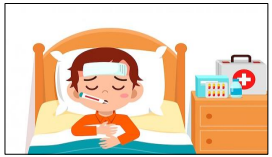Questões de Concurso
Foram encontradas 2.532 questões
Resolva questões gratuitamente!
Junte-se a mais de 4 milhões de concurseiros!
Choose the verb form that fits in the sentence.

(Available on: https://www.freepik.com/premium-vector.)
“The little boy has a fever, a sore throat, and he is also coughing a lot, so it is recommended that he __________ home.”
Read the text to answer question
Jean Piaget was a Swiss psychologist and genetic epistemologist. You may have heard of Jean Piaget's theory of cognitive development, for which he is famous. This theory looks at how children develop intellectually throughout the course of childhood. Prior to Piaget's theory, children were often thought of simply as mini-adults. Piaget's theory had a tremendous influence on the emergence of developmental psychology as a distinctive subfield within psychology and contributed greatly to the field of education. He is also credited as a pioneer of the constructivist theory, which suggests that people actively construct their knowledge of the world based on the interaction between their ideas and experiences. In a 2002 survey of 1,725 American Psychological Society members, Piaget was named the second most influential psychologist of the 20th century.
(Available on: https://www.verywellmind.com/jean-piaget-biography-1896-1980-2795549.)
The word MAY (L1), is used to indicate:
Read the Text II and answer the question that follow it.
Text II
Read the Text II and answer the question that follow it.
Text II